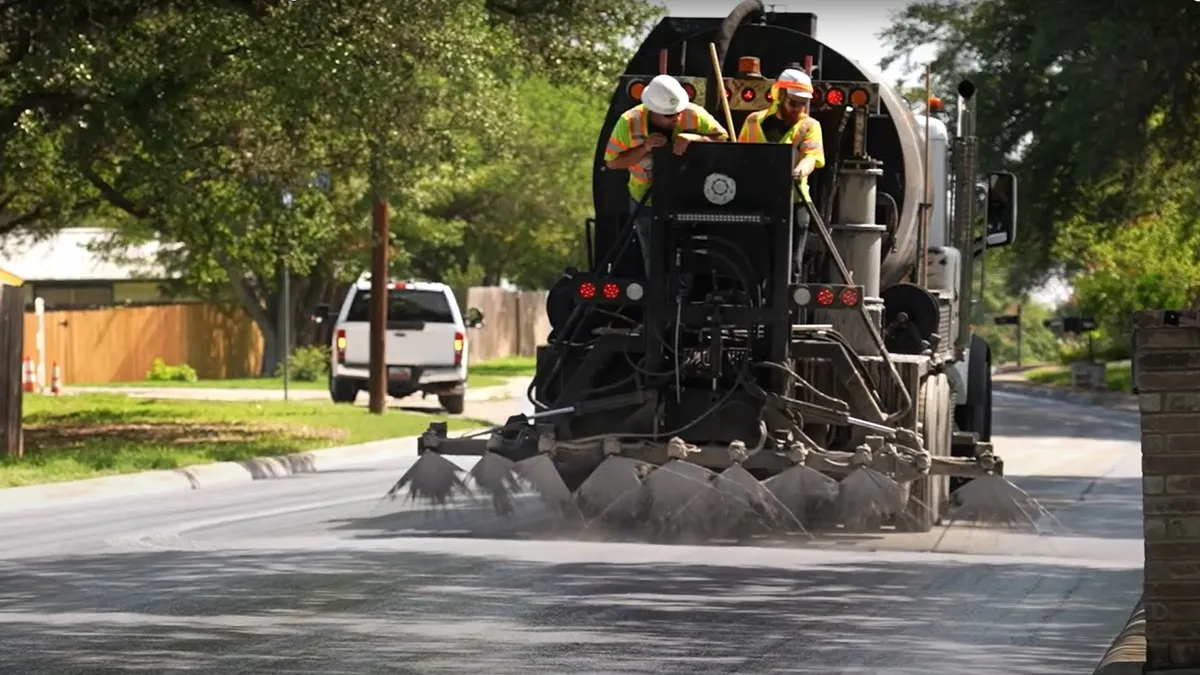Dive Brief:
- To target its heat mitigation efforts, San Antonio plans to use the findings from heat-related research projects it launched last year and shared in a May 9 news release.
- The city partnered with the University of Texas at San Antonio to measure neighborhoods' urban heat vulnerability, a measure that combines heat, income and race factors. The city will use the data to inform its ongoing heat response strategy.
- Other research projects tested the effects of three different cool pavement treatments deployed on city streets.
Dive Insight:
Cities are becoming increasingly concerned about the public health impacts of extreme heat as climate change turns up the thermostat in communities worldwide.
With San Antonio’s summers getting hotter and heat-related illness on the rise, “it’s critical that we direct resources to those most in need of relief,” San Antonio Chief Sustainability Officer Doug Melnick said in a statement. The heat vulnerability study results are shown on an online heat map, allowing residents to explore the data for their neighborhoods.
Its separate findings on the effects of cool pavement provide concrete evidence of the product’s effectiveness in reducing surface temperatures, the city said. San Antonio says it was the first Texas city to use the water-based asphalt treatment, which reflects more sunlight and absorbs less heat than untreated pavement. From its initial effort in 2021, it has since expanded the effort to treat sections of roadway in all 10 city council districts.
SealMaster’s SolarPave, the product that most reduced surface temperatures, resulted in an average reduction of 3.58 degrees Fahrenheit, the city said. The largest reduction in surface temperature compared with fresh asphalt was 18 degrees Fahrenheit. The other products tested were Pave Tech’s PlusTi and GAF Streetbond’s Durashield.
However, the differences in air temperature were “modest and less statistically significant” across all the treated sites, testing periods and products, according to the UTSA report submitted to the city’s sustainability office in February. In fact, the sites treated with cool pavement had marginally warmer air temperatures, on average.
All the products tested met safety standards and can extend the pavement’s life, the city said.
Other U.S. cities are also experimenting with cool pavement to tackle urban heat islands, which happen in areas with a lot of pavement and buildings without tree cover to provide shade. A notoriously hot Los Angeles neighborhood was treated with a GAF product in 2022; recently released study results showed surface temperature reductions of up to roughly 10 degrees Fahrenheit. Ambient air temperature dropped less, with reductions of up to 3.5 degrees Fahrenheit compared with an adjacent neighborhood without the treatment.
Some researchers argue that shade is a much more effective strategy than cool pavement to keep people cool outdoors and protect public health. “No change in surface will protect the body from heat as effectively as preventing sunlight from hitting the body in the first place,” V. Kelly Turner, associate director of the University of California, Los Angeles’ Luskin Center for Innovation and an associate professor of urban planning and geography, told Smart Cities Dive in April.












